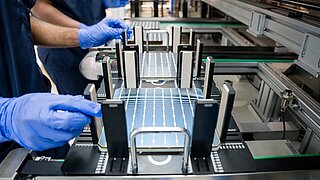Potential for Solar PV Value Chain Manufacturing in the South African Market

The South African – German Energy Partnership supported an analysis of the South African solar PV manufacturing value chain. The study, launched and published in May 2024 during the Enlit Africa Conference, is owned by the South African Photovoltaics Industry Association (SAPVIA), in collaboration with SolarPower Europe. Its objective is to provide an updated analysis of the South African solar PV manufacturing, its potential and resources required for further development. It further aims to assist policy makers, investors, and civil society with mechanisms needed to develop a strong domestic PV value chain that will create jobs and address the triple challenge of poverty, inequality and unemployment.
South Africa’s PV market has seen an unprecedented boom in recent years and is now the 10th largest in the world with 4-4.5 GW expected build in 2024. The growth follows recent deregulations of the power market, energy security concerns and the introduction of international CO2 pricing mechanisms in the industrial sector. It is in this context that the solar PV panel and module value chain have captured the primary attention of the South African policy makers. This presents localization opportunities in the South African market for major solar PV sub-systems including mounting and tracking structures; inverters; and manufactured inputs into electrical and civil balance of plant. The country has developed significant, albeit uneven, capabilities across some of these solar PV sub-systems even though the overall solar PV value chain remains fragmented and underdeveloped, albeit with significant opportunities for growth.
The changing global and domestic environment opens potential opportunities for the deepening of South African manufacturing in solar PV value chains. The extent to which these opportunities are seized depend on both the actions of the South African government and on EU partners. The study therefore proposes recommendations both for South African policy makers and for European partners.

